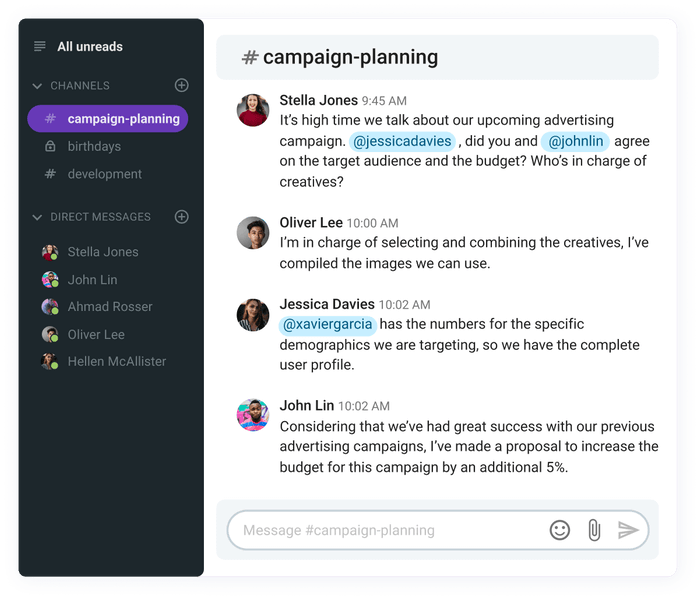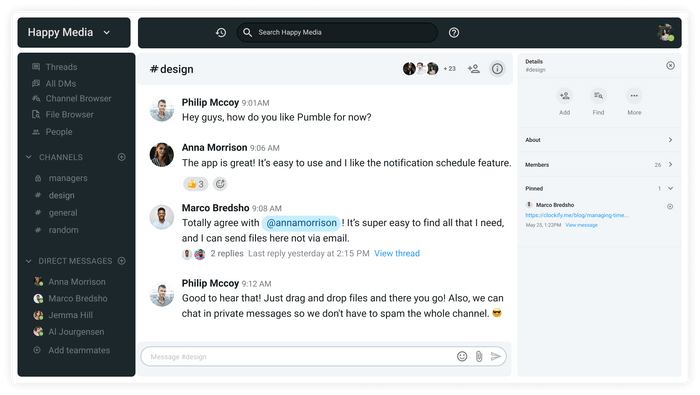We’ve all witnessed a situation at work when a coworker or a team member stepped to the plate in a moment of crisis and took action that exceeded their role requirements, showing clear leadership traits.
This, in a nutshell, is emergent leadership in action.
Emergent leadership, as opposed to traditional, assigned leadership, provides a fairly different perspective on organizational management methods.
Instead of climbing the traditional corporate ladder and being officially appointed, emergent leaders take a more gradual, and natural route.
Supported by their peers for the exceptional leadership qualities demonstrated, emergent leaders organically acquire leadership roles.
Understanding the traits of emergent leaders can help organizations recognize and support leaders in their teams.
In this blog post, we:
- Define emergent leadership traits,
- Explain their importance for the success of organizations, and
- Provide actionable recommendations on how to foster a culture of emergent leadership in a team.
So, let’s dive in.

Table of Contents
What is emergent leadership?
Emergent leadership is a form of organizational management that allows individual leaders to emerge organically.
Bradley L. Kirkman and co-authors of the comprehensive framework on The Emergence of Emergent Leadership define emergent leadership as “the degree to which an individual with no formal status or authority is perceived by one or more team members as exhibiting leaderlike influence.”
We asked Bill Catlette, a Partner at Contented Cow Partners for an expert opinion on emergent leadership. Here’s his definition of the term:

“‘Emergent leadership’ is a process by which someone migrates from being an individual contributor to one who exerts leadership within a unit or team.”
In organizations that foster emergent leadership, individuals are recognized for their traits and expertise — regardless of the formal corporate hierarchy rules.
What are the characteristics of emergent leadership?
As a fairly distinct method of leadership, emergent leadership follows unique rules and characteristics not commonly found in the traditional model of leadership.
Let’s get a closer look at some of the key characteristics that define and distinguish emergent leadership from other, more formal methods.
- Collaboration — Emergent leadership is characterized by collaborative decision-making and brainstorming, as opposed to the traditional approach that predominantly follows a top-down flow.
- Time frame — Emergent leaders build their leadership role in the team over time which contrasts with the assigned leadership where an individual is appointed and assumes the position immediately.
- Dominance — By being supported and recognized within the peer group, emergent leaders are more inclined to feel confident and dominant in their performance and decisions.
- Involvement — Another key characteristic emergent leaders are identified by is their consistent involvement with the team regardless of the situation or their official position.
Traits of emergent leaders in general
Mr. Bill Catlette highlights the importance of identifying the individuals that possess specific leadership traits:

“To be successful, the process is heavily dependent upon getting the right people involved, for the right reasons, and then providing optimal developmental paths for the individual.
The “right people” are generally those wanting to contribute at a higher level, to make a difference in both the organization and other people’s lives. But they must bring a suitable mix of character, competence, and confidence for the process to work… Not just desire for a bigger paycheck.”
To get a better understanding of the concept of emergent leadership, let’s get a closer look at the qualities emergent leaders commonly possess.
- Creative thinking — Finding innovative ways to solve problems and discover new ideas is one of the key traits that distinguish emergent leaders in a group.
- Team-centricity — Emergent leaders show high levels of team-oriented thinking and decision-making.
- Self-motivation — Natural self-starters, emergent leaders don’t require exterior incentives to motivate their actions.
- Self-management — The ability of emergent leaders to reflect on and correct their own behavior acts as an inspiration to other team members.
- Adaptability — Emergent leaders understand the fluid nature of leadership and are more comfortable adapting to different roles, situations, and methods.
- Influence — Leaders identified by their group are inherently more likely to have greater influence among the group and organization as a whole.
Traits of emergent leaders in nonhierarchical virtual teams
In addition to general traits demonstrated by leaders who emerge from within a group, there are other, more specific instances of emergent leadership that require a unique set of traits.
Research on Grounded Theory of Emergent Leadership in Nonhierarchical Virtual Teams shows the following characteristics of emergent leaders identified while monitoring a virtual team:
- Excellent communication skills — As identified in 100% of participants with emergent team leadership potential.
- Trusted by peers and management — A whopping 75% of participants have the trust of peers and management.
- Motivation — High motivation to act was demonstrated by 92% of participants.
- Expertise — As evidenced by 67% of participants, emerging leaders in virtual teams should possess significant expertise in the field.
- Experience working in virtual teams — A solid experience working in virtual teams is also an important trait of emergent leaders as identified in 42% of participants in the study.
Is emergent leadership exclusively reserved for extroverts?
In general, leadership is more commonly associated with extroverted personality types — people who are by definition more action-oriented, talkative, outgoing, and cooperative.
Naturally, extroverted personality types would be more commonly expected to take on the leadership role.
Moreso, even the role of emergent leaders as the inherent traits of extroverts seem to perfectly fit the emergent leadership model.
However, these assumptions may not be entirely accurate, as one research shows.
Namely, extroverts are indeed more likely to assume leadership roles than their introverted peers.
Yet, the main reason we are seeing fewer introverts in leadership positions has little to do with their abilities and competence.
The study examining 184 business students in leadership-related behavior essentially revealed that the only difference between introverted and extroverted leadership potential lies in the predominant mindset they have.
Basically, it’s revealed that the only thing standing in the way of introverts’ success as leaders is their own negative belief about their competence.
The study concludes that “introverts fail to emerge as leaders as often as extraverts because they engage in higher levels of forecasted negative affect and that these forecasts impede their emergent leadership potential.”
This provides an interesting insight and a valuable resource for future leadership development for individuals with introverted personality traits.
What is the difference between assigned and emergent leadership?
As the two opposite leadership methods, assigned and emergent leadership rely on two completely different principles.
Assigned leadership relies on the traditional, top-down organizational hierarchy. This method implies leaders and higher management formally appoint team leaders based on traditionally accepted characteristics such as power, status, and implicit coercion.
According to an article by David T. Houglumon that contrasts traditional and emergent leadership and the theories they were grounded in, traditional (assigned) forms of leadership “focus on power, status, coercion, rank, short-term gains.”
Conversely, emergent leadership follows a more natural process in that informal leaders emerge organically based on how other team members respond to them.
In addition to showing initiative and enjoying the respect of peers, emergent leaders are identified by:
- Excellent communication skills,
- Creative thinking, and
- The ability to influence the decisions of teammates.
Give your team communication a boost with Pumble
What is an emergent leadership example?
Examples of some form of emergent leadership can be identified in virtually any group work setting.
Of course, we can’t necessarily classify every incidental instance of leadership-like behavior as the official example of emergent leadership.
Specifically because emergent leadership is observed and identified over time, through a repeated display of certain traits and behaviors.
However, it’s still important to mention a couple of examples of emergent leadership which — when repeated over time — can signal a clear emergent leadership behavior.
For example, when team members discuss an issue in a business messaging platform such as Pumble, an emergent leader would look for solutions and ways to solve the problem.
Taking initiative, finding the solution, and communicating it clearly to the team is the process usually connected to emergent leadership behavior.
Even though their formal role doesn’t require these traits, emergent leaders will demonstrate specific emotional intelligence and critical thinking in understanding the appropriate opportunity to step up and show initiative.

Connect with your coworkers on Pumble
Another example is when a misunderstanding or a conflict occurs between team members.
Individuals that possess strong emergent leadership traits will demonstrate a higher level of emotional intelligence and understanding while helping to resolve the situation and encourage agreement between teammates.
💡 Pumble Pro Tip
For more tips on how to navigate conflict at work, check out our guide on the blog:
Why is emergent leadership important?
Emergent leadership is not solely connected to individual professional gains.
In addition to allowing more efficient professional advancement for junior team members, this type of leadership also provides several benefits to the teams and organizations as a whole.
Let’s go over some of the key benefits organizations encouraging emergent leadership models can experience.
Emergent leadership fosters independence
In its most basic sense, emergent leadership encourages an autonomous approach to work and breeds independent thinking and action.
It creates a flexible landscape for individuals to develop independence in decision-making.
More importantly, this form of self-management affects how team members take action by relying on their own skills and judgment.
Although it may seem contradictory to formal organizational rules — with the right guidance and training — individual emergent leadership activities can perfectly support larger, organizational objectives.
Emergent leadership enhances team productivity
Individuals taking initiative is central to faster project turnaround.
When emergent leadership is effectively encouraged within an organization, team members are more equipped to find the best solutions to the issues at hand. Simultaneously, they will require less back and forth with superiors thus reducing production time.
Such leadership model fosters more efficient problem solving and ensures faster results.
Over time, emergent leaders can inspire a positive momentum with other team members to actively look for more creative solutions and ideas.
We spoke with Dr. Naomi Murphy, Consultant, Clinical and Forensic Psychologist, and Co-founder of Octopus Psychology. Dr. Murphy shares a similar perspective on how emergent leadership drives the success of organizations.

“All companies need new energy and ideas to stay fresh. A successful business can’t afford to stay static — it needs to be able to grow and adapt. Emergent leaders are a good way to help this process. They understand the company culture and approach but use creativity and critical thinking to identify problems and implement adaptive change; importantly, they have the respect and popularity to encourage others to follow their lead.”
Similarly, Mr.Bill Catlette emphasizes the shared commitment emergent leadership promotes as the catalyst for organizational success:

“It is important organizationally because it presents a demonstrably better business model (and attendant outcomes) when individuals and organizations are deeply invested in one another over a longer period.”
Emergent leadership restructures top-down hierarchy
Dr. Murphy states that emergent leadership plays a key role in building more resilient, and unified teams that share responsibility and accountability:

“Emergent leadership is key to creating a culture of shared responsibility within a company; this makes it more likely that problems will be identified and resolved than is the case within a company where power is held by only a few. Hence, they strengthen company resilience.”
In a traditional, top-down hierarchy that promotes assigned leadership, the decision-making is limited to a few individuals in charge.
While this system is not necessarily always wrong, it most certainly lacks a variety of perspectives.
In addition, it is often a complex and time-consuming process to get used to the newly appointed leader coming in and initiating new rules and procedures.
With emergent leadership, organizations don’t have to suffer any delays as the leaders are already part of the team and have a better understanding of the team dynamics, and by default enjoy the respect of other team members.
Emergent leadership essentially proposes a bottom-up approach that flattens the organizational hierarchy.
By empowering individuals to take the lead and voice their opinions, organizations are creating a more level playing field for all team members.
At the same time, the emergent leadership approach allows organizations to widen their pool of opportunities through new ideas and solutions.
Moreover, when team members are allowed to have an equal part in teamwork and decision-making rather than being followers it eliminates delays and promotes employee accountability.
💡 Pumble Pro Tip
For more on how to hold remote employees accountable, be sure to read our guide on the blog:
Emergent leadership promotes a culture of support and trust
Dr. Murphy emphasizes the role of emergent leadership in creating a growth-centered, supportive company culture:

“Typically strong team players, the growth of emergent leaders within the company is likely to be supported by their colleagues who are more likely to trust them than a manager who has been appointed from outside. When senior managers demonstrate a commitment to emergent leadership, they signal that there is an opportunity for professional growth and convey their desire to bring out the best in their employees and the company; it’s a sign of a flourishing company culture.”
A culture where leaders are organically identified by their peers generates more trust and support within teams and organizations as a whole.
Team-centric decision-making allows emergent leaders to gain trust from their peers.
Emergent leaders gain trust from their peers over time through actions that clearly communicate their commitment to team and project success.
It is, therefore, more likely that the trust will be preserved after the team member takes a leadership role.
Naturally, this is a far more organic process compared to the assigned leadership model that implies introducing an outside manager and having them develop trust with team members.
Companies and teams encouraging emergent leadership usually have better support of executives as teams are allowed more freedom to self-manage with leaders chosen by the team.
Build trust within your team with Pumble
How can managers encourage emergent leadership?
Understanding the importance of cultivating emergent leadership and learning how to recognize an emergent leader in a team is only the first step in the process.
The second, and often more challenging part depends on the active role of management in supporting and encouraging emergent leadership in their teams.
The role organizations have in this regard is to create an environment that allows these types of leaders to naturally step forward.
Whereas direct team managers can consider taking more focused steps in supporting emergent leadership potential to thrive.
Let’s get a closer look at the strategies managers and higher executives can implement to encourage emergent leadership within their teams.
Allow access to company information
Organizations and teams that nurture transparency in general, are more likely to foster a productive and healthy culture. This is especially true for virtual remote teams that rely on sharing and promoting productive collaboration. Transparent communication across all levels in an organization allows teams to break away from team silos and other practices that hinder collaboration.
To confirm this, we reached out to Andy Karesa, Founder and Principal Leadership Advisor at Karesa Consulting Ltd.
Karesa shared a similar perspective on how managers can encourage emergent leadership through transparency:

“Managers can encourage emergent leadership by demonstrating transparency and vulnerability to their teams. Inherently, leadership is a scary place to be. Over time of giving your teams the opportunity to develop and show their capabilities, it will be clear who will become the leader. By putting constraints on how they demonstrate their leadership potential, is only going to hinder the overall value of their development.”
When working on fostering emergent leadership, team leaders should provide access to all key company information and regularly update all team members on all practices and procedures.
Having team members properly informed and encouraged to voice their opinion creates an environment where emergent leaders can confidently step forward.
Moreover, when team members are informed and encouraged to get involved in the conversation, they are more likely to develop team-centric decision-making and act with the team’s best interest at heart.
Here are some of the ways you can promote transparency across the organization:
- Hold regular all hands virtual meetings — To ensure all team members are in the loop of the company’s direction.
- Enhance cross-functional collaboration — To promote the exchange of information between related departments.
- Streamline team communication — Consider adopting a single, centralized communication tool for all departments to have all conversations in one place and ensure maximum transparency and efficiency in communication.
💡 Pumble Pro Tip
For more tips on how to effectively streamline team communication while working remotely, be sure to check out our guide on the blog:

Foster innovation
As mentioned above, emergent leaders are more likely to possess strong creative thinking skills which naturally drive innovation.
In fact, researchers in the journal Procedia – Social and Behavioral Sciences reveal that we consider innovation and leadership as completely interdependent:
“We consider leaders and innovators as those who are concerned with and competent at bringing ‘new realities’ into existence. We consider innovating to be a primary element in the process of leading and we see innovations as examples of leadership results or outcomes.”
However, in traditional environments, there is less room for junior team members to demonstrate these traits.
Organizations encouraging emergent leadership need to consider allowing more opportunities for team members to strengthen and demonstrate their innovative thinking.
For instance, you can organize regular discussions and brainstorming sessions with your team.
If there’s no room in your schedule for a video conference, consider creating a channel in a team chat dedicated to ideas.
There, you can create an inclusive space for asynchronous communication and have all team members participate even if they are working across time zones.
These brainstorming sessions will encourage creative ideas and thinking outside the box emergent leaders are known for.
You can also use this channel to solicit ideas when problem-solving and inspire potential emergent leadership in individuals willing to go beyond the problem and consider the bigger picture.

Communicate seamlessly even across time zones with Pumble
Encourage initiative
Another effective way managers can encourage emergent leadership in their teams is by fostering initiative. After all, each team member can show as much skill and initiative as it is formally allowed.
Avoiding to create more space for potential leaders to show initiative can cause your team and organization to miss out on some great leadership talent and opportunities such professionals can create for the company.
To avoid missing these opportunities, consider creating a space for emergent leadership to take place.
You can allow your team members more independence when solving problems.
For example, instead of showing up to the rescue immediately as the issues arise, guide your team towards the solution to allow potential leaders an opportunity to show initiative.
Be sure to offer resources and guidelines for the team to work together or individually on finding the most optimum solutions.
Self-motivated individuals will jump at the opportunity to take charge in an environment that promotes initiative and team-centric decision-making.
Create a culture of learning
Dr. Murphy suggests creating an environment where team members are inspired to get curious and learn the traits of effective leaders.

“By role modeling curiosity and the desire to keep growing and learning, managers can encourage their employees to value these qualities. The ability to own up to making mistakes and appreciate these as opportunities for learning is a key way in which leaders in organizations can demonstrate the value of a growth mindset and also encourage their staff to have the confidence to step outside of their comfort zone and try new things.”
In addition to leading by example, she proposes mixing different points of view to generate fresh ideas and perspectives:

“Partnering up less experienced staff with more experienced ones and making it clear that you value their fresh perspective as much as you value the experience of their managers can also be really invigorating and encourage new perspectives and approaches. Managers often make the mistake of only supporting/ encouraging new talent that fits in well with the existing ethos and prevailing culture. This won’t keep your business contemporary and fresh. Avoid the temptation to stick with what you know and consider what those who seem committed to the company and yet jar against the existing culture/practices might have to offer.”
To allow an environment where emergent leadership can thrive organically, managers can consider creating a culture where learning is supported and encouraged. Managers, in this case, can create a safe space for team members to practice taking initiative and making mistakes as part of the process.
Encourage upward communication
Effective upward communication is one of the most straightforward tools organizations can use to encourage more individuals to speak up, take charge and voice their perspective.
To do away with the traditional top-down hierarchy and allow leaders to organically step up, organizations can consider allowing more space for upward communication to take place.
By encouraging team members to practice upward communication, organizations are positively affecting employee performance according to workplace communication statistics. Namely, employees who feel heard at work are 4.6 times more likely to feel empowered to perform their best.
Team members who feel heard and acknowledged are more likely to feel empowered to speak up and take action.
Here are some of the ways managers can encourage upward communication in their teams:
- Promote an open-door policy
- Establish a detailed internal communication plan that defines channels for upward communication
- Institutionalize constructive feedback
💡 Pumble Pro Tip
For a more in-depth breakdown of upward communication and how it impacts your team, be sure to check our guide on the blog:
Wrapping up: Emergent leadership depends on a supportive climate to thrive
The changing landscape of work we’re witnessing over the last couple of years seems like the ideal environment for emergent leadership to position itself as the default organizational framework.
However, to achieve such an environment, organizations, leaders, and managers need to commit to creating a culture that supports open communication, initiative, and fresh perspectives across all organizational levels.










